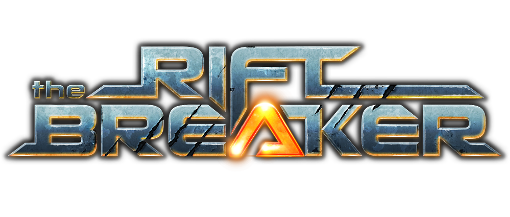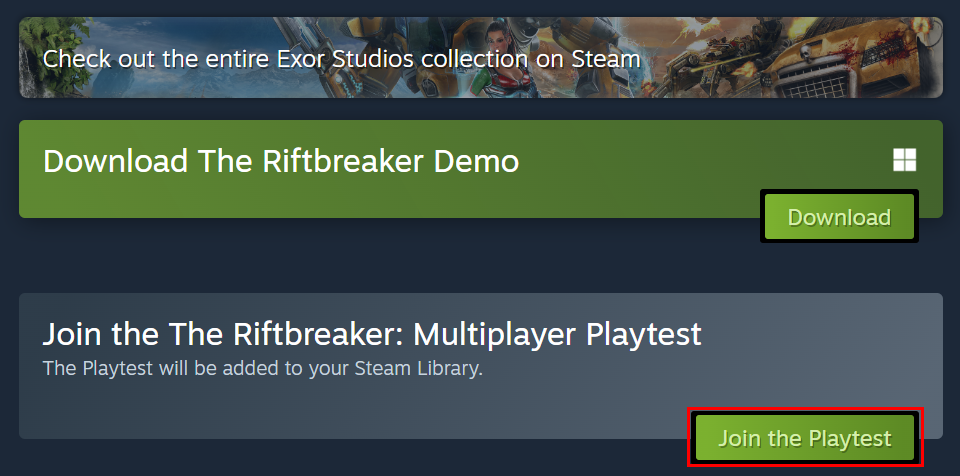
We hope that you’ve had the chance to try out the Open Beta version of the 2.0 Update. It is, without a doubt, the most significant upgrade package the game has received since the initial release in 2021. We have introduced upgrades and changes to almost all aspects of the game and, judging by your feedback, a lot of them hit their marks! You’ve also given us a lot of hints on what can be tweaked and improved even further. One of the most debated topics is our new “penalty for dying repeatedly” system, which we dubbed ‘Death Skulls' for short. In this article, we will explain why we felt the need to introduce it, how it works, and how you can tweak it to your liking.

If you want to try out the new Death Skull system in real-life conditions, try out the Playtest version of The Riftbreaker - it's available for everyone. Simply click the button and you're in! You can also join the coop_beta branch of the main game to test the Campaign mode. All the info is available here.
The Death Skulls system is our way of encouraging a more measured approach to combat in the Riftbreaker. Players are really good at developing tactics and strategies using all the tools that developers give them. Even in the game’s earliest days, during the alpha test, we saw players rushing into enemy groups and taking advantage of the fact that the mech’s death explosion deals a massive amount of damage to enemies in a large radius. It wasn’t elegant, but it also wasn’t the most effective strategy. We didn’t want to remove the idea of getting some revenge on the ones that hurt you, but we also weren’t happy with the option of using this mechanic as a weapon. That being said, it was not a top priority problem in the case of single-player, but we knew we could do better in the case of Co-Op.

The first time your mech is destroyed you won't notice much of a difference. Your mech is reconstructed at the HQ with no penalties besides dropping some weapons. The new thing here is the skull marker that hovers over your head. It will disappear over time, but now you have to be careful until it disappears.
Co-op games are not just about putting a couple of players on the same map and giving them a goal to work towards. They are also about meaningful interactions. One way players can interact with each other in The Riftbreaker Co-Op mode is by reactivating the mechs of fallen teammates on the battlefield. The mechanics of that are pretty simple - if your buddy goes down, you teleport to them and pick them up, and both of you get to enjoy a short period of invulnerability and firepower boost. There was no need to motivate players any further, as keeping all players alive is a natural priority for co-op players.

If you get your mech destroyed with a skull marker active, the situation is a bit different. The reconstruction will now cost a part of your Carbonium and Ironium reserves.
The players quickly realised that the temporary attack damage and survivability bonus they would get after resurrecting another player was a significant strategic advantage. It became a common strategy for one player to rush forward with melee weapons, trying to deal as much damage to the enemies before inevitably going down. Then, another player would rush in, pick them up, and clear a mass of enemies with the temporary revive boost provided. Rinse and repeat. We didn’t like the fact that dying was so trivial, and survival was no longer a high-stakes game. This wasn’t how we envisioned combat, so we stepped in to prevent this from happening.

The more skulls you 'acquire', the higher the penalty.
The Death Skulls system is our way of encouraging a more methodical approach to combat by applying incremental penalties for recklessness, which can be avoided altogether by playing more cautiously. When your mech goes down in combat, you receive a skull marker, regardless of whether you’ve been revived or had to respawn at the headquarters. If you have a skull marker and go down again, the time needed to pick you up is going to be 0.75 seconds longer at default settings. Additionally, if no one can revive you within 30 seconds, respawning at the HQ will cost you 5% of all carbonium and ironium reserves.

In Multiplayer, players don't immediately respawn at the HQ. Instead, they can pick each other up if they fall in battle. The first time it happens, it is almost instant.
Thanks to this system, it takes a bit longer for your friends to pick you up in the heat of battle. Every time you go down, you get an additional skull stack, making the punishment more severe, since nobody wants to cost their team 5, 10, or 15% of their resources. One very important thing to note is that “skulls” timeout after 90 seconds. This means that the system only affects situations where a player dies repeatedly within 90 seconds; otherwise, the game remains unchanged. Not only does it lead to more careful play after you get two or more skulls, but it also makes reviving in combat a lot more exhilarating. It feels really good when you manage to save your friend despite a long revival time.

Active skull markers also make it more difficult for your friends to pick you up in the heat of the battle. Each skull extends the time you need to interact with a downed mech to reactivate it.
The new Skull system applies to both single- and multiplayer game modes. The major difference between the two is that when you play solo, there is no one to revive you if you fall in combat. If you die a second time in a short period, you will lose some resources. However, the amount you have to pay for each skull scales with the difficulty level. On Easy, this system is entirely disabled; on Normal, the consequences are noticeable, but not severe. Things get a little more heated on Hard and Brutal difficulties.

If your buddy is destroyed while trying to reactivate your mech, make sure to return the favor. An active mech is the most powerful weapon on the battlefied. It also feels really nice when you manage to save a friend in a heated battle!
We’ve been testing this system with the community throughout the Closed and Open Betas, and we have already made numerous adjustments based on the feedback that we’ve received. However, we recognize that this is a controversial change for some of you and that it introduces another layer of complexity that may not be to everyone's liking. For this reason, we have immediately added the options to control this system in the Custom Difficulty menu. We have given you complete control over all the parameters of the Death Skull system:
You can test this system in action in our Open Beta that will run until the official release of the 2.0 Update. We’re looking forward to hearing your feedback - nothing is set in stone during the beta, and we are very much open to suggestions and changes. Feel free to comment here and on our Discord at https://www.twitch.tv/exorstudios - we read all comments and try to change as many things to your liking as we can.
EXOR Studio